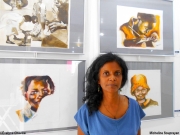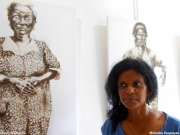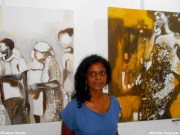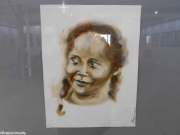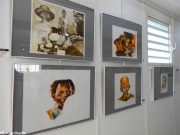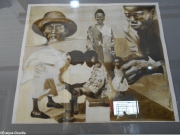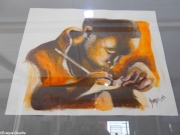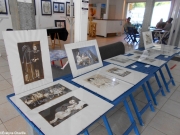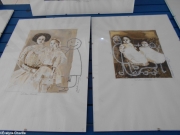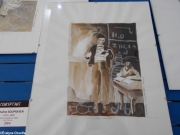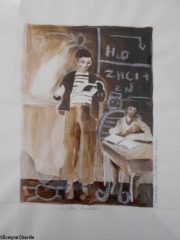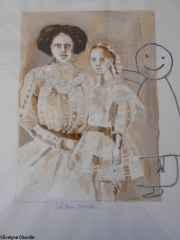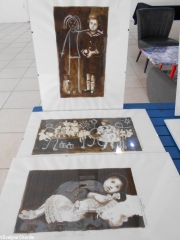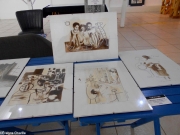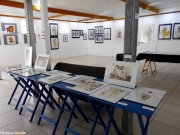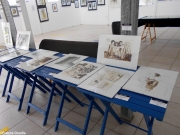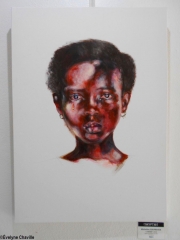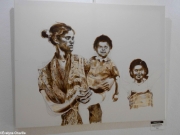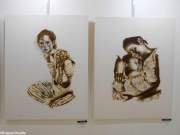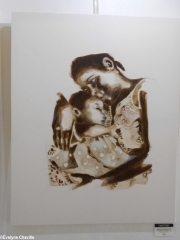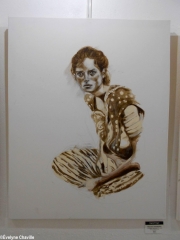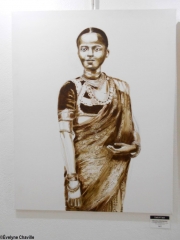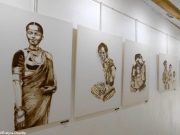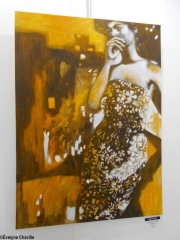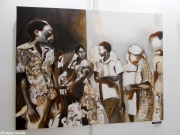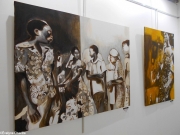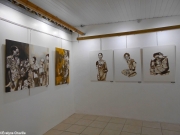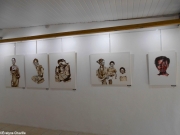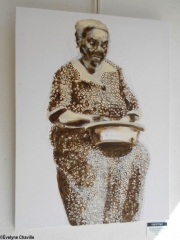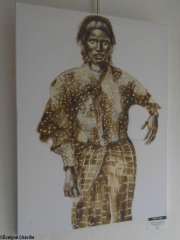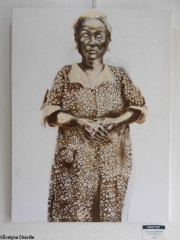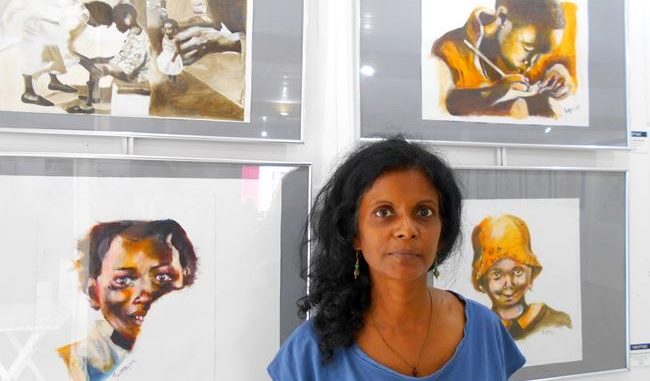
From November 24 to 29, Concept’Art proposed “Contrast”, an exhibition composed of works by Micheline Souprayen and Jérôme Sainte-Luce, at the gallery L’Art s’en Mêle in Le Gosier. Even though it was a joint exhibition, we chose to give the floor separately to these two artists to fully explain their approach.
Originally from Capesterre Belle-Eau, Micheline Souprayen has been painting since her early childhood and she deepened her artistic knowledge by being a free auditor at the Beaux-Arts de Paris and a student in Paris workshops. On the occasion of this exhibition, she offered visitors a journey through the life of a grandmother, with works of sober colours drawn on paper and canvas.

Kariculture.net : How did you prepare this exhibition entitled “Contrast”?
Micheline Souprayen : It all started with these 5 drawings that I took out of the drawers, like old documents ; these are drawings that I had never shown before. I really wanted to go into a world of childhood and maybe even stay there. Maybe a return to myself. These are works made around 2015, they are acrylic drawings on paper. Most of them are children’s faces, softness, tenderness.
Kariculture.net : Were you inspired by all these people?
M. S. : Not at all. It’s a mix of images that I see, that I have inside me. Sometimes they are distorted, reinterpreted images. And then it’s the pleasure of working with very few colours, of trying to say very little with umber-brown tones.
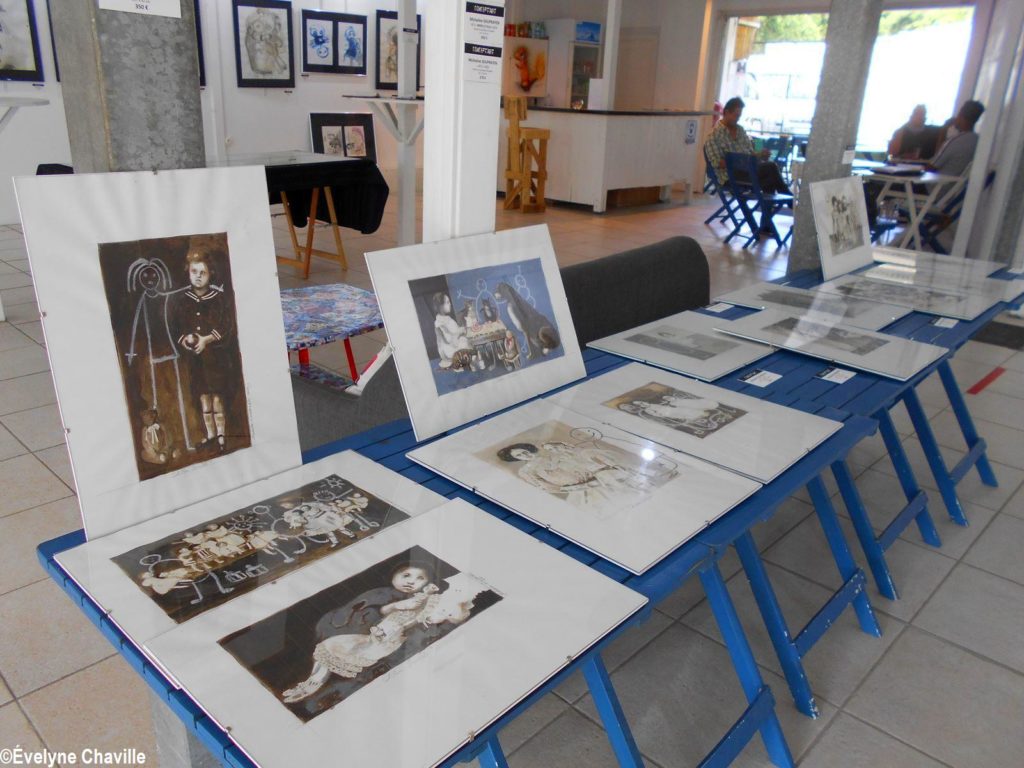
Kariculture.net : How did you link these five drawings with all the other works?
M.S. : To continue, I always stayed on drawings on the theme of childhood and I made 14 drawings on the invisible friend. It’s an invisible presence that comes to take its place in the child’s game, and will have all the qualities he wants. All children are visited by this invisible friend who makes their childhood hyper marvellous. This is why children invent friends, comforters, they have substitute parents when these are not available. This also triggers creativity and then we grow up, we lose our imagination, we become serious. I associated these little characters – the invisible friend – in the drawings. Children can draw these little beings automatically but it is more difficult when you are an adult because you no longer have the innocence to do so. When I see Jérôme’s works and the Amerindian-style drawings, I tell myself that there is a certain resemblance between us, even if the theme of the exhibition is “Contrast” (…). We find in this work childhood, certainty when we were children that we were loved by our parents. I kept the same graphic style and very few colours.
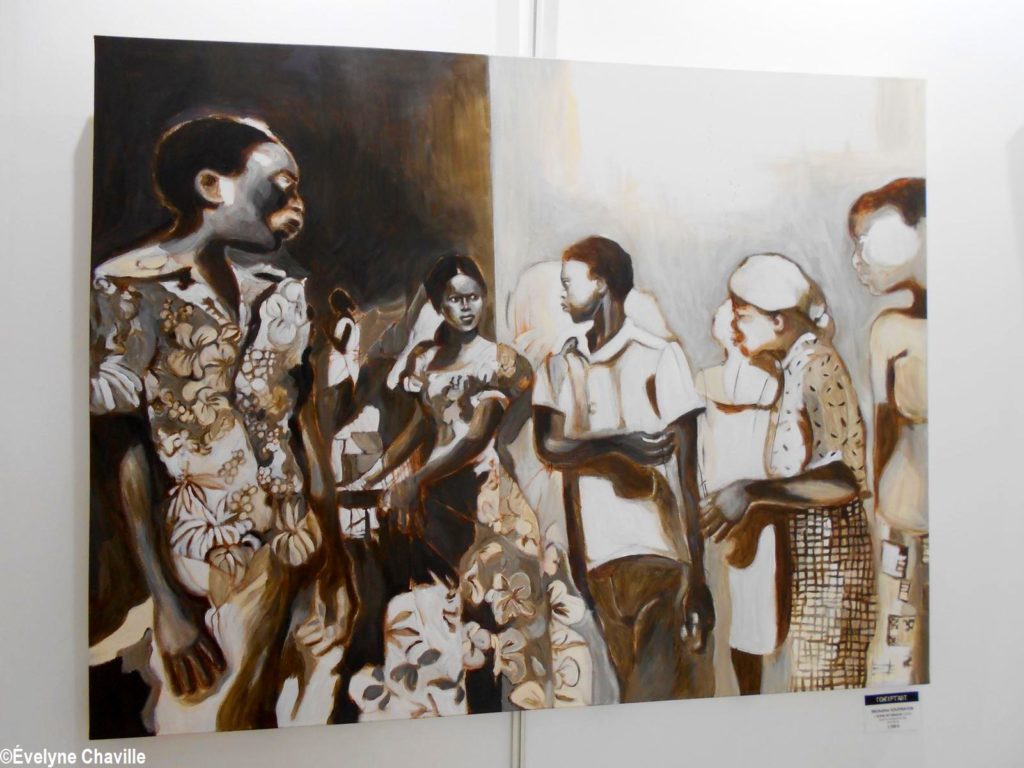
Kariculture.net : Then you leave the works on small and medium size paper to work on large canvases. Why this change?
M. S. : When I finished these 14 drawings, I needed more space. I went to the canvas but with the same graphic style, you can see the pencil, the drawing, the acrylic, the sober colours. I wanted to represent the mother and the images that flashed through my mind. Here, it’s a street flirting scene; everything happens in the street. Men, when they are picking up in the street, you have to look, you have to go in their direction, they are looked at and it has to work ; mothers like it when their son is flirting because he is powerful but unfortunately, mothers tend to project on their son what they experienced with a man. The emancipation of women is very much a question of women themselves, women are victims of men but they often reproduce what they experienced and we are in a vicious circle. This young girl is angry but she loves the young man who is flirting with her (…) In fact, I wanted to show the complexity of feelings of love: you can love but you are never loved by the person you would like, the person you love, you cannot reach him etc.
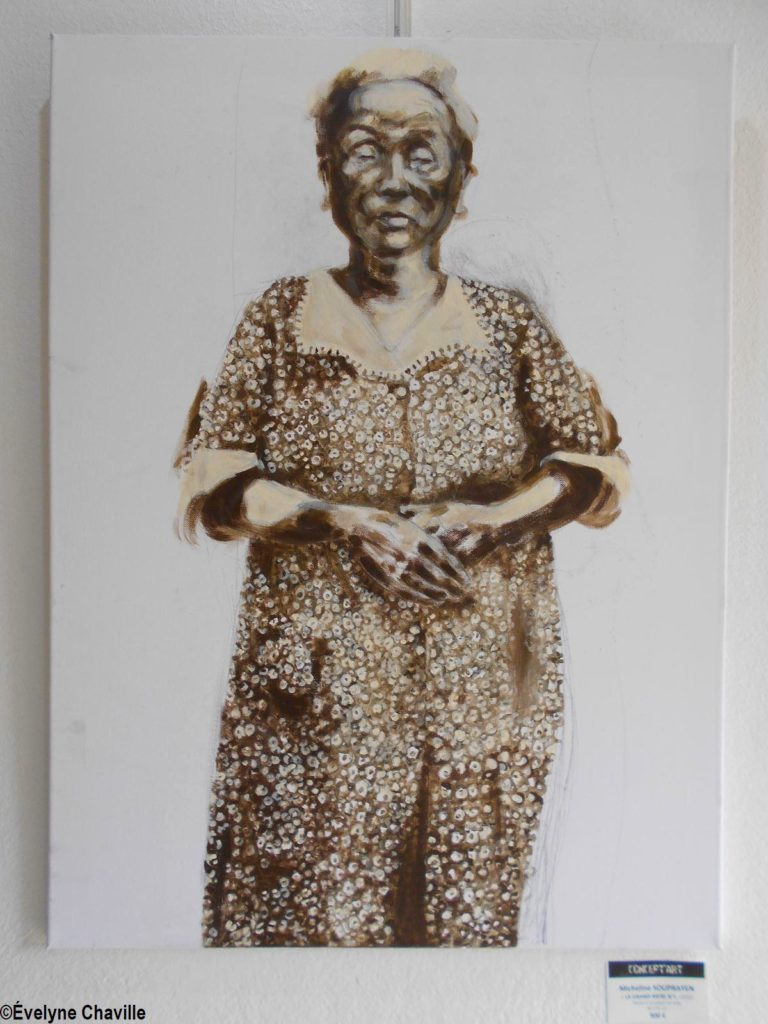
Kariculture.net : What is the connection between these children, this young girl and this grandmother?
M. S. : This flirting scene concentrates everything: the little girl, the woman, the mother, the grandmother. It is a journey through the grandmother’s life. She overcame all passions, she went through a lot, she acquired a certain inner independence so she is freer to love her children without hindrance. The grandmother is the symbol of life. That’s why I used these sober colours, this umber to paint.It’s as if I was going back to my past with faces of Indian women who surrounded me, women I know (…).
Kariculture.net : Why are there so many women among the works you show in this exhibition?
M. S. : It’s a coincidence, yesterday was the “International day for the elimination of violence against women”. Because I am a woman, I am interested in women, my mother and myself as a woman. There is a lot to say about women. Emancipation goes a lot through society and as long as society does not evolve, does not give women their full place, they will be stuck.
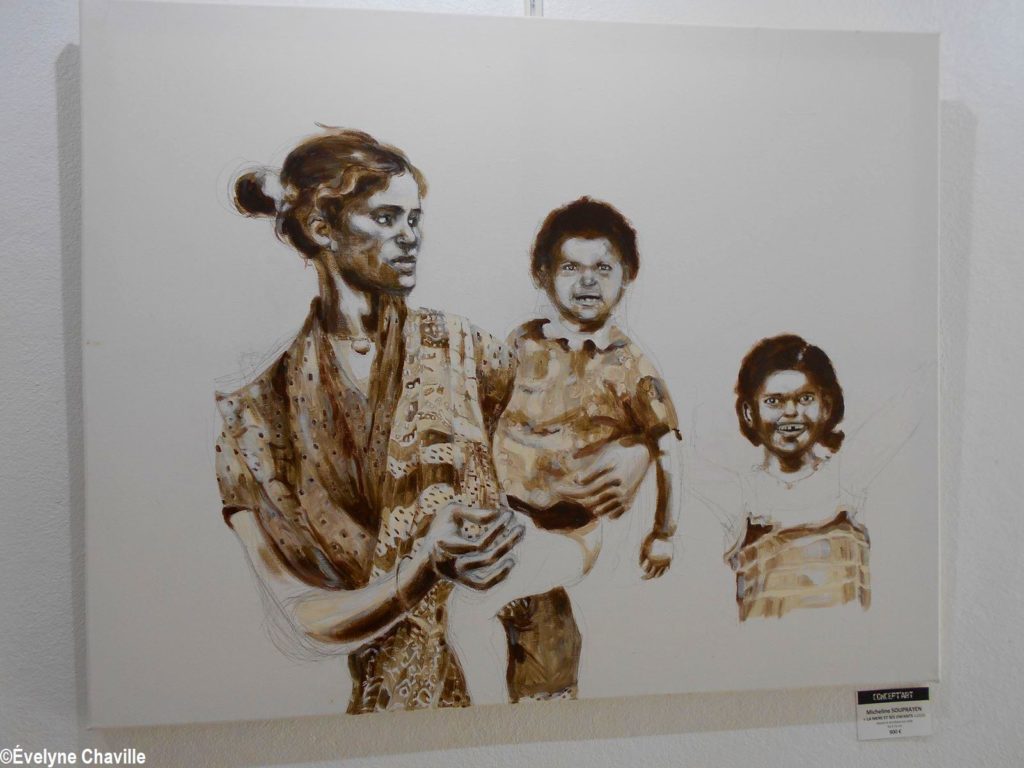
Kariculture.net : Among all these women, is there one who really existed?
M. S. : No. Here again, I was inspired by images, I made a montage. It’s not reproduction, it’s not interesting. It’s as if I always want to take pictures out of the drawers.
Kariculture.net : According to you, the “potomitan” woman, the one who manages to reconcile everything, no longer exists?
M. S. : Today, West Indian women want to overcome all these stereotypes : nice woman, “potomitan” etc. They have always been said that they were the “potomitan”, they were proud of it now, they no longer wants to be this “potomitan” because everything depends on them while men are frolicking (…) Women’s conditions is in full mutation, they have many responsabilities, they are women, wives, mothers, they have to work in order to integrate into social life, to open up to many things and that’s great but, at the same time,they don’t have much time for children anymore. For me, they are the most affected by this emancipation of women.
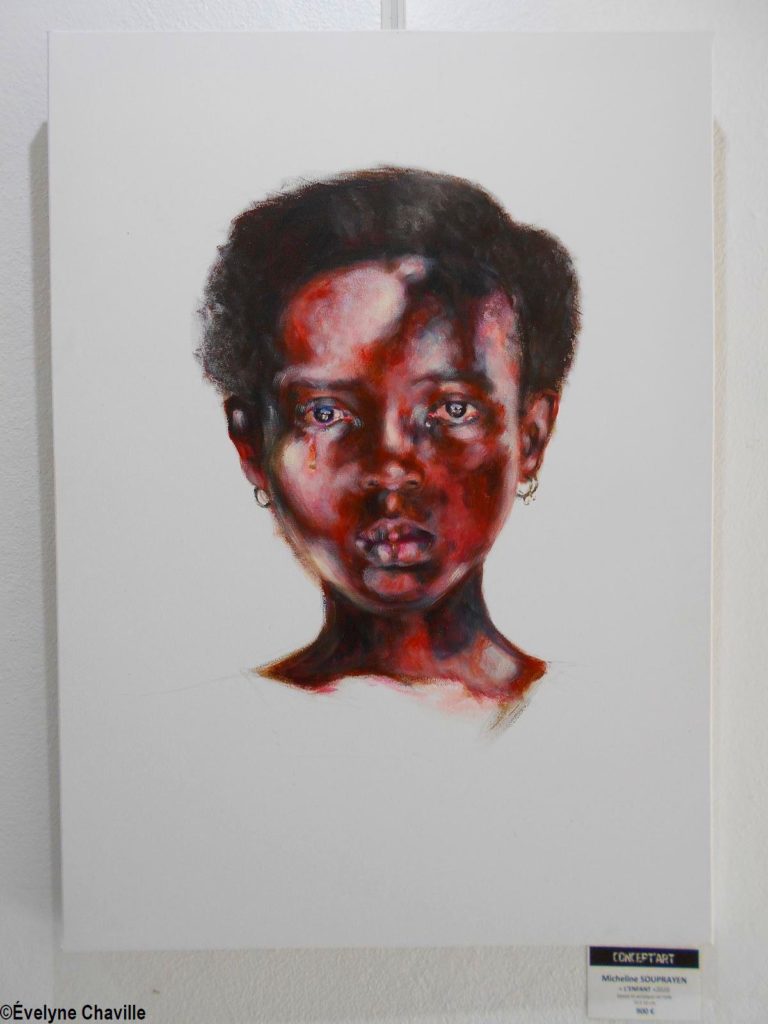
Kariculture.net : Contrary to your previous paintings, these ones are rather “stripped”, it’s the period we are living in that inspires you this “stripping”?
M. S. : It’s true that I tended to fill all my paintings before. I went from drawing on paper to drawing on canvas, it’s important to say, and not painting on canvas. It had to be really like the spirit of the paper, the white of the canvas is part of the work, not to touch it and leave pencil marks. But, I also needed to clear my mind (…).
Kariculture.net : What was the reason for this need to become lighter artistically? Lockdown because of the Covid-19 epidemic?
M. S. : It’s also because of that, but it’s part of our journey, we move forward in time, we ask ourselves questions. Lockdown reinforced our questioning, we are wondering about the most important things (…) I think that this will increasingly be reflected in my work. At the beginning, it seemed that I had so many things to say, that I was muzzled, so I used all the space on the canvas, I don’t really know how to speak with words.
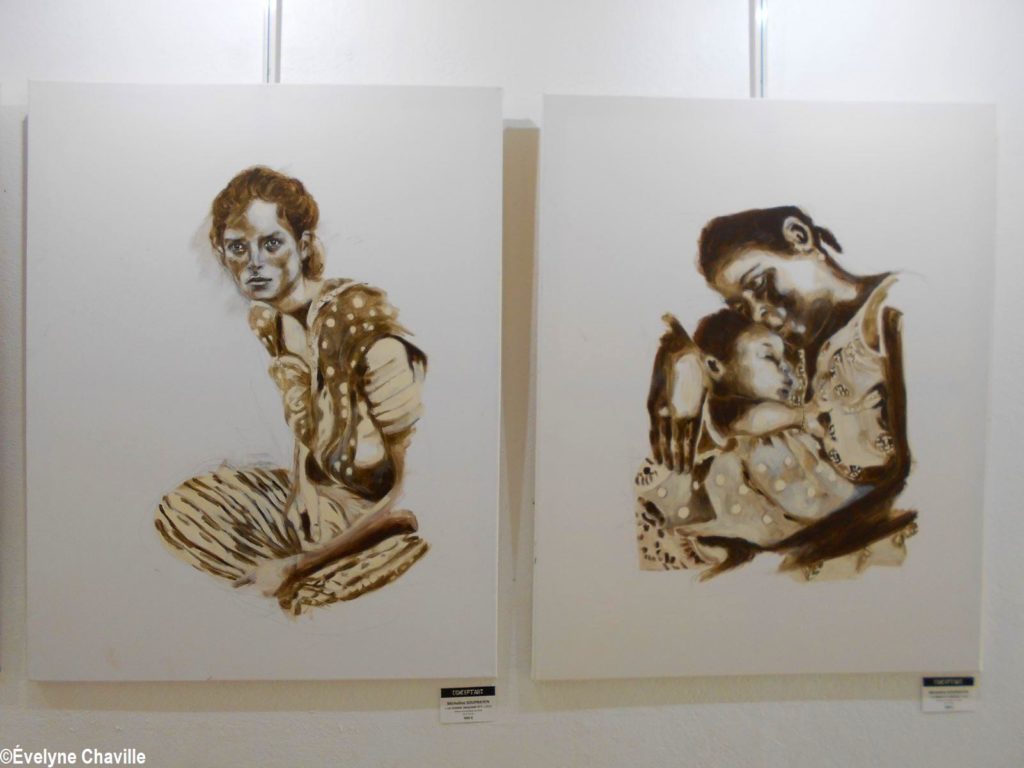
Kariculture.net : Does this mean that you are more at peace in your production? You express yourself less on the canvas but the messages are strong?
M. S. : More at peace with myself, more in tune with myself. I no longer need to say so many things through painting. I put things in order. I focused more on myself in order to reach out to others.
Kariculture.net : What do black and white mean to you?
M. S. : I’m not going to say chiaroscuro, but it’s the fact of contrasting, bringing things out, but not necessarily making a distinction between them.
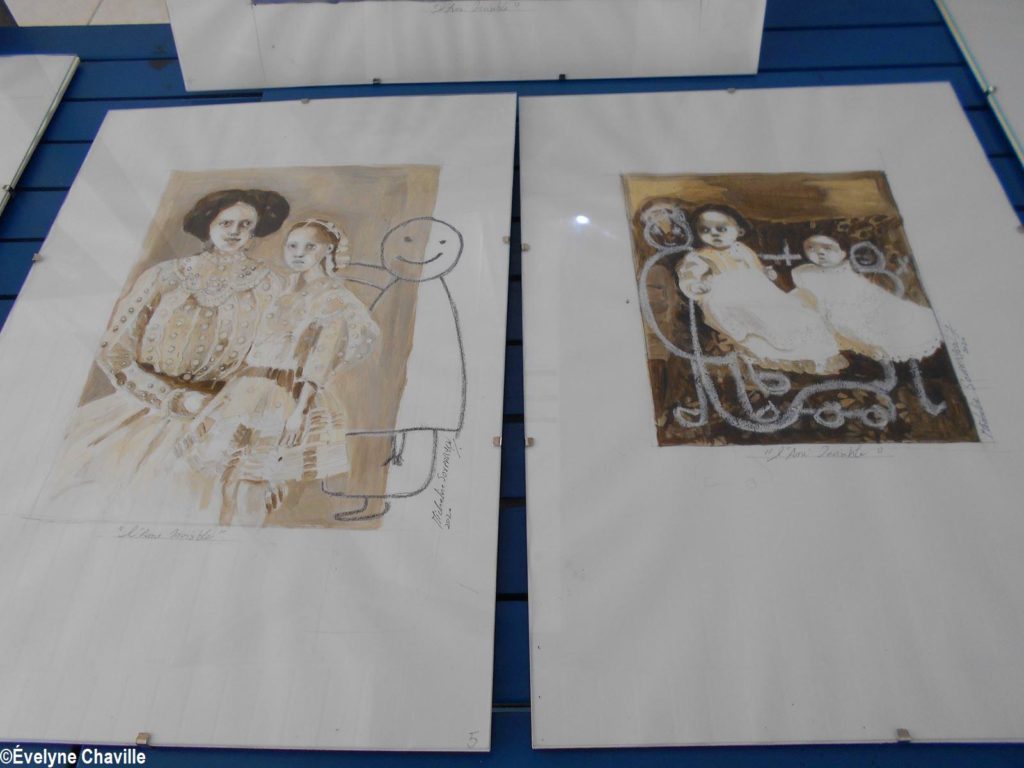
Kariculture.net : Is this where we find the theme of the exhibition “Contrast”?
M. S. : Yes, we could say that. But it’s really getting to the point, saying things quickly.
Kariculture.net : How did you experience lockdown? What did you do during all those weeks?
M. S. : In fact, I thought I had to look after myself, my loved ones, it was very important, I saw this period like that, without panic. I think it’s a path that I had started to take. I also worked.

Kariculture.net : What traces will this Covid-19 period leave on art, on artists?
M. S. : In recent years, contemporary art became very important, many notions changed compared to the classical period. With contemporary art the artist is highlighted as much as his work, the artist’s personality is very important in his work. Is this where this will change? Will we focus more on the work and less on the artist? I don’t know. I wonder if there will not be a turning point in contemporary art and if we will not go back to something a bit like when we left the Renaissance to go back to Antiquity. Will man be the centre of everything? And individualism that goes along with capitalism? (…).
* All works by Micheline Souprayen can be seen at the CONCEPT’ART gallery at La Voie Verte, Jarry, Baie-Mahaut. Franck Thévenaud: 0690 436446

